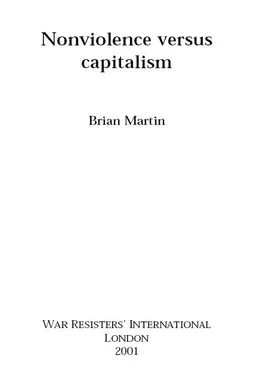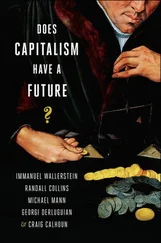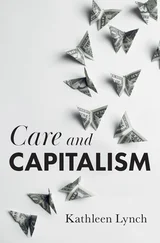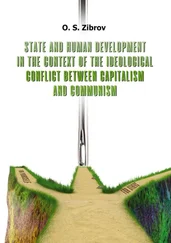T. R. Chouhan and others, Bhopal: The Inside Story. Carbide Workers Speak out on the World’s Worst Industrial Tragedy (Goa, India: The Other India Press; New York: Apex Press, 1994); Sanjoy Hazarika, Bhopal: The Lessons of a Tragedy (New Delhi: Penguin, 1987); Paul Shrivastava, Bhopal: Anatomy of a Crisis (London: Paul Chapman, 1992, 2nd edition).
It is possible to imagine rare exceptions, for example jobs in designing nonviolent alternatives to the military.
Gerry Hunnius, G. David Garson and John Case (eds.), Workers’ Control: A Reader on Labor and Social Change (New York: Vintage, 1973); Paul Mattick, Anti-Bolshevik Communism (London: Merlin, 1978); Ernie Roberts, Workers’ Control (London: Allen & Unwin, 1973); Jaroslav Vanek (ed.), Self-Management: Economic Liberation of Man (Harmondsworth: Penguin, 1975); H. B. Wilson, Democracy and the Work Place (Montreal: Black Rose Books, 1974).
Oscar Anweiler, The Soviets: The Russian Workers, Peasants, and Soldiers Councils, 1905-1921 (New York: Pantheon, 1974). For an insightful analysis of workers’ control and revolutionary action, see Carl Boggs, “Marxism, prefigurative communism, and the problem of workers’ control,” Radical America, Vol. 11, No. 6 — Vol. 12, No. 1, November 1977 — February 1978, pp. 99-122.
Seymour Melman, Decision-Making and Productivity (Oxford: Basil Blackwell, 1958) is one of many studies showing that productivity can be increased by extending workers’ capability in decision making.
Hilary Wainwright and Dave Elliott, The Lucas Plan: A New Trade Unionism in the Making? (London: Allison and Busby, 1982).
Paul Blumberg, Industrial Democracy: The Sociology of Participation (London: Constable, 1968); Martin Carnoy and Derek Shearer, Economic Democracy: The Challenge of the 1980s (White Plains, NY: M. E. Sharpe, 1980).
For example, Donald Ralph Kingdon, Matrix Organization: Managing Information Technologies (London: Tavistock, 1973); Charles C. Manz and Henry P. Sims, Jr., Business Without Bosses: How Self-Managing Teams are Building High-Performing Companies (New York: Wiley, 1993).
On the changing rhetorics in management consulting, see Robert Jackall, Moral Mazes: The World of Corporate Managers (New York: Oxford University Press, 1988), pp. 137-144.
Michael Seidman, Workers Against Work: Labor in Paris and Barcelona during the Popular Fronts (Berkeley: University of California Press, 1991). For a briefer treatment, see Michael Seidman, “Towards a history of workers’ resistance to work: Paris and Barcelona during the French Popular Front and the Spanish Revolution, 1936-38,” Journal of Contemporary History, Vol. 23, No. 2, April 1988, pp. 191-220.
Jack Mundey, Green Bans and Beyond (Sydney: Angus and Robertson, 1981).
Richard J. Roddewig, Green Bans: The Birth of Australian Environmental Politics (Montclair, NJ: Allanheld, Osmun, 1978).
Sherry R. Arnstein, “A ladder of citizen participation,” AIP Journal, July 1969, pp. 216-224.
David W. Ewing, Freedom Inside the Organization: Bringing Civil Liberties to the Workplace (New York: Dutton, 1977); Myron Peretz Glazer and Penina Migdal Glazer, The Whistleblowers: Exposing Corruption in Government and Industry (New York: Basic Books, 1989); Alan F. Westin, with Henry I. Kurtz and Albert Robbins (eds), Whistle Blowing! Loyalty and Dissent in the Corporation (New York: McGraw-Hill, 1981).
A. Ernest Fitzgerald, The Pentagonists: An Insider’s View of Waste, Mismanagement, and Fraud in Defense Spending (Boston: Houghton Mifflin, 1989).
C. Fred Alford, Whistleblowers: Broken Lives and Organizational Power (Ithaca, NY: Cornell University Press, 2001); Brian Martin, The Whistleblower’s Handbook: How to Be an Effective Resister (Charlbury, UK: Jon Carpenter, 1999).
Deena Weinstein, Bureaucratic Opposition: Challenging Abuses at the Workplace (New York: Pergamon, 1979).
Leslie J. Freeman, Nuclear Witnesses: Insiders Speak Out (New York: Norton, 1981).
“Ploughshares” is a term generically applied to principled peace activists who, after taking direct action to damage or destroy components of the military system, then surrender themselves to police. See for example Liane Ellison Norman, Hammer of Justice: Molly Rush and the Plowshares Eight (Pittsburgh: PPI Books, 1989).
Pierre Dubois, Sabotage in Industry (Harmondsworth: Penguin, 1979). For numerous examples see Martin Sprouse with Lydia Ely (eds.), Sabotage in the American Workplace: Anecdotes of Dissatisfaction, Mischief and Revenge (San Francisco: Pressure Drop Press, 1992). See also The Black Cat Sabotage Handbook (Eugene, OR: Graybill, n.d.) and the magazine Processed World .
David F. Noble, Progress Without People: In Defense of Luddism (Chicago: Charles H. Kerr, 1993), p. 1.
David F. Noble, America by Design: Science, Technology and the Rise of Corporate Capitalism (New York: Alfred A. Knopf, 1977). See also David Dickson, Alternative Technology and the Politics of Technical Change (London: Fontana, 1974).
Noble thinks it would be presumptuous to provide a programme of action for the labour movement. He does recommend intellectual work: “In essence, if workers have begun to smash the physical machinery of domination, so responsible intellectuals must begin deliberately to smash the mental machinery of domination.” ( Progress Without People, p. 51).
Avoidance of harm to humans is emphasised in manuals for environmental saboteurs: Dave Foreman and Bill Haywood (eds.), Ecodefense: A Field Guide to Monkeywrenching (Tucson, AZ: Ned Ludd Books, 1988, second edition); Earth First! Direct Action Manual (Eugene, OR: DAM Collective, 1997).
Monica D. Blumenthal, Robert L. Kahn, Frank M. Andrews and Kendra B. Head, Justifying Violence: Attitudes of American Men (Ann Arbor: University of Michigan, 1972), p. 86.
For excellent advice on how activists can respond to surveillance and harassment, see Brian Glick, War at Home: Covert Action Against U.S. Activists and What We Can Do About It (Boston: South End Press, 1989).
K. William Kapp, The Social Costs of Private Enterprise (Cambridge, MA: Harvard University Press, 1950).
Paul R. Ehrlich, The Population Bomb (London: Pan, 1971).
Barry Commoner, The Closing Circle: Nature, Man, and Technology (New York: Alfred A. Knopf, 1971).
Boris Komarov, The Destruction of Nature in the Soviet Union (London: Pluto, 1981).
Читать дальше

![Brian Jacques - Martin the Warrior [Redwall 6]](/books/128385/brian-jacques-martin-the-warrior-redwall-6-thumb.webp)










